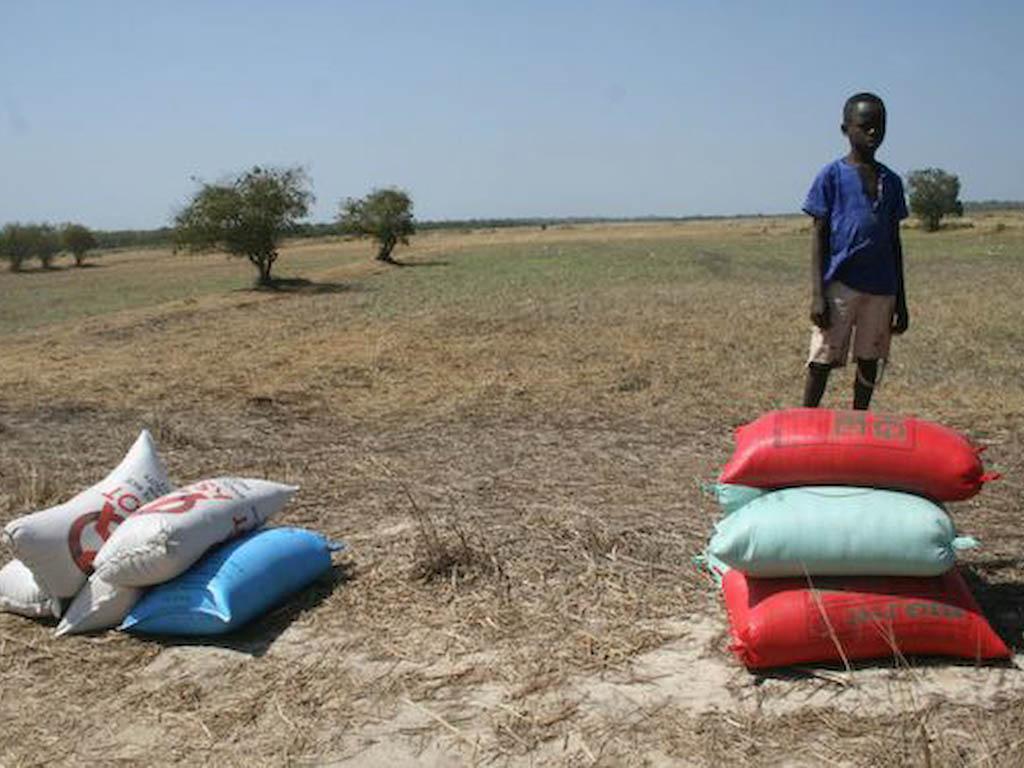Baobab water
Rivista Africa 15.05.2022 Pascal Maitre Translated by: Jpic-jp.orgIn Madagascar, large, centuries-old trees become reservoirs to cope with the growing shortage of water. Baobabs are known for their size, robustness and impressive longevity. Less well known is their ability to store enormous quantities of water for long periods of time: a precious characteristic for those living in the Mahafaly plateau, the driest region of the Big Island

The Mahafaly Plateau is one of the driest territories in Madagascar. Located in the south-eastern part of the Big Island, it is populated by about 20,000 people belonging to the Mahafaly and Tandroy ethnic groups, who have learnt to live in such a hostile environment. It rains here only a few times a year and the scant rainfall is immediately absorbed by the porous, calcareous soil. There are no rivers, lakes or other natural water points. A century ago, the region suffered a long period of drought that led to famine and the deaths of thousands of people.
Those who survived realised that they had to run for cover to avoid further water and humanitarian emergencies. It was then that the people of the plateau noticed a peculiarity of the baobabs: the ability of their trunks to store large amounts of water. When a baobab is struck by lightning, its trunk rips open and rain seeps into the cracks, both small and large, collecting in the gaps. The water does not penetrate the hard, compact wood of the tree, which does not rot. It remains fresh and surprisingly pure.
Natural barrels
The 'barrel' trunk of the baobab tree, characterised by a stem that can reach a diameter of up to 8 metres, is a kind of natural 'climate-controlled' cistern that can hold and store rainwater. The largest baobabs can store up to 14,000 litres of water, which the bark of the trees protects from external contamination. The communities in Mahafaly have learnt to turn these giants of nature into water reservoirs to cope with the harshest and hottest times of the year.
Each family is responsible for its own tree, which it guards with care. Ampotaka, with a population of 300 families, each with its own baobab tree, is a typical village in the region. Every year in June, two or three new trees are dug out to create new reservoirs, since older reservoirs lead to a slow deterioration of the tree, which eventually collapses in on itself. To create a good reservoir, the baobab needs to be relatively mature: speaking of plants that can live over a thousand years, 'mature' usually means at least three hundred years old. It takes three people, and at least ten days of work, to obtain the desired volume cavity. The larger the reservoir, the greater the chance of surviving droughts.
Difficult months
On the Madagascar plateau, water resources are carefully managed throughout the dry season, which generally runs from May to October... but can last much longer. For the first three months, the daily need for water is met from the reserves collected naturally in the hollow trees. For the next three months, the inhabitants look for tubers (such as mangeboka) and roots (baboke) to quench their thirst and squeeze for drinking water. Wild watermelons are also rich in water, used for cooking and drinking.
In July, the artificial baobab cisterns that filled up during the rainy season are reopened. The water inside them usually lasts until October and is used for drinking, cooking and washing. If rainfall delays - and climate change makes the changing seasons increasingly uncertain - villagers are forced to make long wagon journeys, 15-20 hours on bumpy roads, to reach the first place where water can be purchased. At that point, water consumption is restricted to a maximum. The children bathe only once a month. Not a drop must be wasted. One suffers from thirst and the weakest die of dehydration.
The vagaries of the heavens are increasingly frequent and, while the eastern coasts of Madagascar are often battered by violent hurricanes, the interior regions of the plateau are exposed to recurring periods of drought. This is why baobab reservoirs are increasingly essential. Their construction and maintenance are handed down from generation to generation. And each tree is christened with the name of a new-born child so that it will take care of its own baobab when it becomes an adult.
See, L’acqua del baobab
















 EDitt | Web Agency
EDitt | Web Agency
Leave a comment